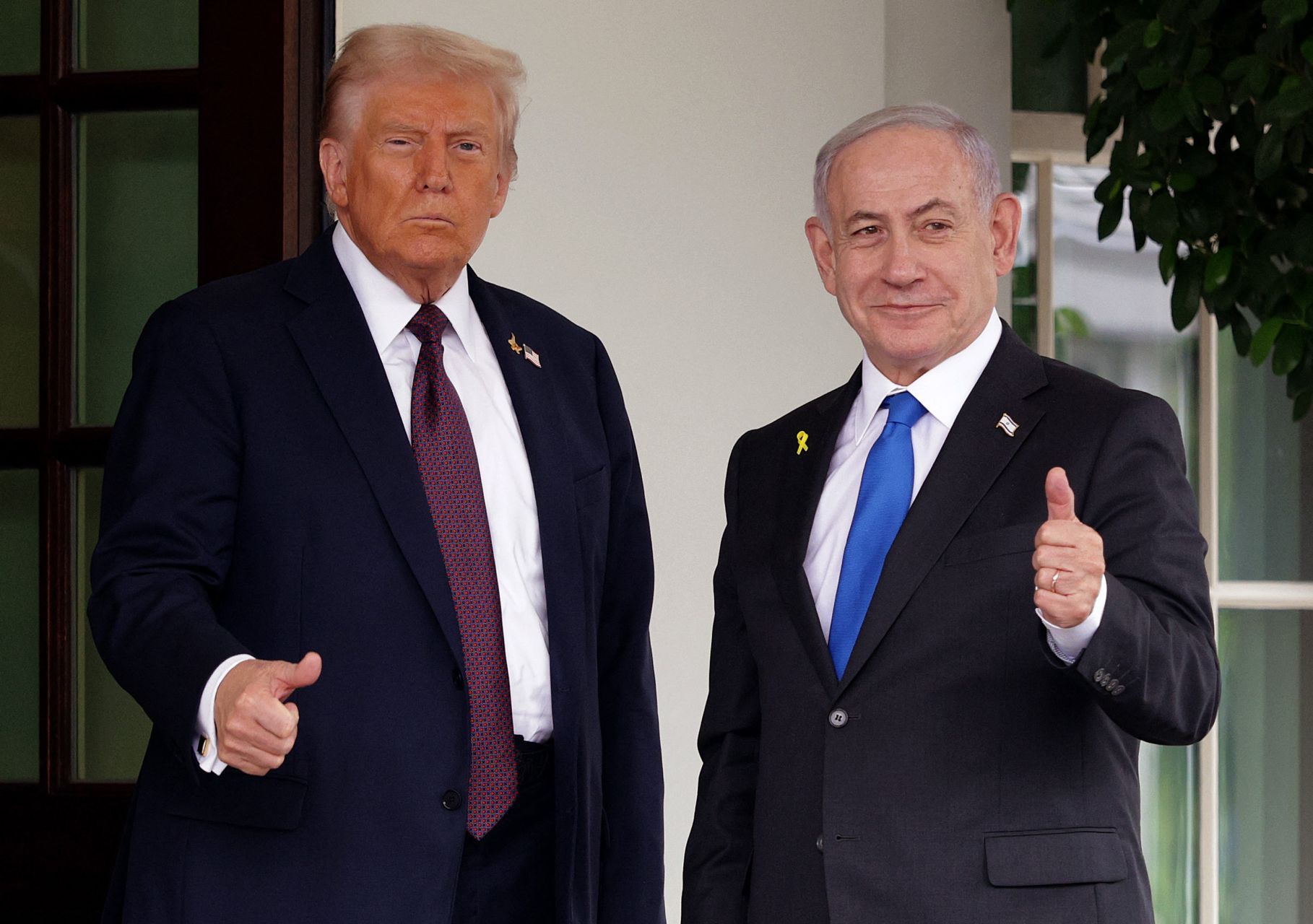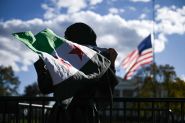- Home
- Middle East
- Trump’s Plan for Gaza: Heading into Phase 2

U.S. President Donald Trump (left) welcomes Israeli Prime Minister Benjamin Netanyahu upon his arrival at the White House on September 29, 2025, in Washington, D.C. © ALEX WONG VIA AFP
After the October truce and the release of Israeli hostages, Washington is moving forward with the second phase of Trump’s Gaza plan: dismantling Hamas’s military capabilities, securing the coastal strip, and kickstarting reconstruction. However, the path ahead is fraught with risk.
One month after the October 10 ceasefire meant to close the chapter on two years of war in Gaza, the United States is struggling to turn the truce into a meaningful political process.
Phase 2 of Trump’s ambitious 20-Point Plan was meant to shift from a halt in fighting all the way to reconstruction. Yet internal documents obtained by Politico reveal growing doubts within the US administration, with the link between the two phases displaying a question mark on slides presented at a US Central Command symposium.
Military and civilian officials attending the event highlighted major obstacles: the slow pace of the Israeli withdrawal, uncertainty over Gaza’s future governance, Hamas’s continued resistance, and questions surrounding the deployment of an International Stabilization Force (ISF) tasked with securing the territory.
A High-Risk Transition
The first phase, completed in October, secured the release of 44 hostages and remains and roughly 2,000 Palestinian detainees, along with an increase in humanitarian aid. Yet on the ground, the situation remains volatile. Far from being neutralized, Hamas has redeployed more than 7,000 fighters into areas vacated by Israel, filling the security vacuum.
The move to the next phase, which involves disarming Hamas, an Israeli withdrawal to the perimeter, and the establishment of transitional Palestinian governance, remains highly uncertain.
A slide presented at the conference highlighted a “total institutional vacuum”: the Board of Peace, tasked with overseeing the transition, still has no staff, and the planned Palestinian police force exists only on paper. “Everyone is flying at 40,000 feet, but no one talks tactics,” a participant told Politico.
Trump Under Pressure
Trump, who declared at the Knesset in October that this marked “the beginning of an era of lasting peace and harmony,” is now confronting the complex realities of a situation he knows little about.
The initiative, seen in Washington as a political gamble ahead of the US elections, risks turning into a quagmire. Even within his own administration, some fear that Gaza could become a long-term entanglement at odds with his “America First” agenda.
Still, his team is striving to maintain momentum. This week, his son-in-law and special envoy, Jared Kushner, returned to Jerusalem to advance Phase 2 negotiations. A key hurdle remains: Hamas fighters entrenched in the tunnels of Rafah in southern Gaza, with Israel refusing any evacuation and Hamas insisting on safe passage.
A Coalition Nowhere in Sight
The deployment of the International Stabilization Force remains a major challenge. The US has begun drafting a resolution at the UN Security Council, but volunteers are in short supply. Indonesia, Azerbaijan, and Pakistan have offered troops, as has Turkey, yet Israel strongly opposes the latter’s participation.
“Several countries are willing to fund the operation, but not to send personnel,” admits a senior US official. Without a clear mandate, the risk of a stalemate is very real.
Meanwhile, Arab states fear a de facto partition of Gaza between Israeli-controlled zones and Hamas-run enclaves. Trump’s plan, which sets no timeline for Palestinian sovereignty, further heightens these concerns.
The “Trump Whisperers” at Work
According to a report by the British think tank Chatham House, the success of the plan now depends on behind-the-scenes diplomacy by Gulf and European leaders, who have emerged as genuine “Trump whisperers.”
Presidents Mohammad bin Zayed of the United Arab Emirates (UAE), Mohammad bin Salman of Saudi Arabia, Emir Tamim of Qatar, and France’s Emmanuel Macron are leveraging their personal relationships with the US president to keep his focus on Gaza.
The Saudi crown prince is expected in Washington on November 18 to re-engage Trump in the process, advance Phase 2, and advocate for a political pathway that could ultimately include recognition of a Palestinian state. Yet, as Chatham House notes, this influence “remains fleeting, relying more on personal rapport with Trump than on any structural shift in US policy.”
Peace on Life Support
Amid US hesitation, Israeli mistrust, and Hamas’s defiance, Phase 2 of Trump’s plan resembles a fragile pause rather than a lasting peace.
Diplomats are already warning of a potential return to violence. “Without genuine political will and a clear horizon for Palestinian sovereignty, all of this is merely a reprieve,” notes a European diplomat in Tel Aviv.
For Washington, the gamble in Gaza remains high: turning a fragile truce into a historic agreement without falling back into one of the Middle East’s oldest traps.
Read more




Comments